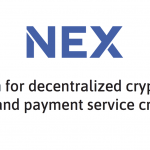Nimiq is a third generation blockchain protocol combining elements of bitcoin and ethereum. And without a doubt, it is open source and fully decentralized.
PROJECT OVERVIEW.
Nimiq is a frictionless peer-to-peer payment protocol for the World Wide Web. It is a third-generation blockchain protocol combining elements of bitcoin and ethereum, streamlined for the web platform. And without a doubt, it is open source and fully decentralized.
Browsers are first-class citizens in the Nimiq distributed network. They are able to establish consensus with the network, and enable true peer-to-peer payments from within, all without a trusted third party. In comparison to conventional crypto currencies, this browser-first approach lowers barriers of entry by orders of magnitudes for developers, customers and merchants. Nimiq is based on the Bitcoin Lightning Network and uses Hashed Time lock Contracts (HTLC) to support payment channels for off-chain transactions.
HOW IT WORKS.
The immense potential of Nimiq may already be obvious, but let us list just some of the reasons why it is more than worth your attention. Its most prominent features, as stated by its creators, include ease of use, scalability, and speed. Being browser-based, it requires no installation, which in itself means lower barriers of entry and greater availability and ease of use. It is written in JavaScript ES6 and network communication is established via Web Sockets and WebRTC.
Nimiq provides its users with fast synchronization and transactions. Hashed Time lock Contracts allow users to send off-chain transactions by establishing payment channels with one another. These transactions do not take up any space in the blockchain while being as secure as the on-chain kind. No block confirmation is required and the transaction costs are extremely low. Nimiq’s web-based peer-to-peer exchange represents an easy, quick, and affordable way for users to turn their Nimiq tokens into fiat. The users can manage their funds with equal ease thanks to the built-in browser wallet.
The most important component of the Nimiq ecosystem is the Browser Library, which is designed to allow any website to become a full-fledged citizen of the network. Some of the crucial functions include creating and sending transactions, validation of the Blockchain, and synchronizing with the network.
What is also great about Nimiq is that its Betanet is already available, so users and investors can get a preview of the protocol. Although not equipped with all the features the final version of Nimiq will offer, it is a great way to get to know the opportunities Nimiq brings and provide supporters with peace of mind, knowing they have made a sound investment.
PLATFORM.
The Nimiq Blockchain has the below key components.
- Network for establishing P2P connections.
- Storage for persistent keys and Blockchain data.
- Crypto for hashing, signing and verifying.
In addition, the protocol is streamlined for the constraints of the web:
- Compression of Blockchain data to sync within seconds instead of hours.
- Instant and scalable transactions so over-the-counter payments are practical.
- Simplicity means we do only one thing and we do it better than anyone else: payments.
- Blockchain Parameters streamlined for our browser-first approach.
- Cross-Chain Compatibility with other blockchains such as ethereum for advanced smart contract features.
KEY HIGHLIGHTS.
- There are two types of nodes in the Nimiq network: Backbone Nodes and
Browser Nodes. Both types use the same isomorphic JavaScript code
base. - To connect to the network, they establish a websocket connection to
at least one Backbone Node. - Once they have established their first connection, they start to
establish browser-to-browser connections using the - Backbone Node as signaling server. Browser Nodes can also act as
signaling server for further r browser-to-browser connections.
ECOSYSTEM.
Browser Library and the Miner Demonstration.
The most fundamental part of the Nimiq Ecosystem is the Browser Library. It enables any website to become a first-class citizen of the Nimiq network.
It can synchronize with the network, validate the blockchain, query account balances as well as create and send transactions.
The Nimiq Betanet interface showcases the features of this library.
Web-based Wallet.
The web-based wallet uses the browser library to provide users with a wallet for everyday use. The main goal is to provide a first-class user experience and empower inexperienced users to become familiar with the blockchain technology. Educating users about unfamiliar aspects of blockchain technology will be key to the wallet interface — i.e., explain the need for confirmations and how to keep private keys secure. Functionality to print cold wallets that store funds with physical security will also be integrated.
Peer-to-Peer Exchange.
The Peer-to-Peer Exchange will make exchanging Nimiqs into local fiat currency easy, fast and cheap. There are multiple steps to achieving this goal, Initially, the easiest way to acquire Nimiq will be via regular Token Exchanges just like any other blockchain token. Use HTLCs for cross-chain transactions. Cross-chain transactions allow users to exchange tokens across different blockchains without an escrow. This will enable Nimiq to make use of the exchange services around bitcoin and ethereum without paying high fees for the token exchange. Partner with VISA payment services to create a VISA-to-Nimiq exchange (centralized in the first place).Create a centralized Peer-to-Peer Exchange like localbitcoins.com. Main difference will be the radically improved usability. After reaching this step we want to implement results on state-of-the-art research on decentralized Peer-to-Peer Exchanges on top of our web-based protocol to create a decentralized exchange that is cheap, fast and usable for everyone.
ICO DETAILS.
The Nimiq ICO started on June 28, 2017, capped at 60,000 ETC.
We have mentioned before in this Nimiq review that Nimiq is not an Ethereum-based application, but a third-generation blockchain. That is why investors received tokens during the ICO, just as in the case of Ethereum initial crowd sale. Nimiq Exchange Tokens (NET) are to be exchanged into native Nimiq tokens (NIM) once the Mainnet is launched. The launch is planned for December 2017. One Nimiq token will be worth 10 Nimiq Exchange Tokens.
During the crowd sale, a total of up to 10,500,000 NET were created and offered for sale. This amount is equal to 5% of the total future supply of NIM tokens or 25% of the circulating supply of NIM tokens after 1 year. The maximum supply of NIM tokens is 21,000,000. However, this amount may be reduced in case of a switch from Proof of Work to Proof of Stake.
The planned distribution of all NIM tokens is as follows: 88% will go into rewards for miners, issued over the course of approximately 100 years, 5% will go to token sale contributors, with no vesting, 2.5% will go into Long-Term Endowment Foundation, with 10-year vesting, 2% will go to into good-cause partnerships and sponsorship, with 10-year vesting, 1.5 will go to early contributors, with 6-month vesting, and 1% will go to the creators of Nimiq, with 3-year vesting
COMPETITORS.
Tenx.
Ticker: PAY
Open Date: June 24, 2017
Fundraise cap: 200,000 ETH
Website / Documentation
TenX aims to develop a payment platform that allows anyone to use any digital currency in the real world. The developers plan to offer a mobile wallet and Visa/Mastercard debit card to be used with any digital currency and convert to fiat at the time of transaction. TenX completed a $1 million USD seed round in March 2017 and reached its pre-sale target of 100,000 ETH in 36 hours in June. The TenX wallet has been live and working since the beginning of the year and is set for an iOS, Android and web app rollout this month. TenX distinguishes itself from competitors like TokenCard, Wirex and Monaco by supporting multiple blockchains other than Ethereum and Bitcoin, and by giving card holder incentives on every purchase, as well as zero transaction fees.
OmiseGO.
Ticker: OMG
Open Date: June 27, 2017
Fundraise cap: $25 million USD
Website / Documentation
OmiseGO is a blockchain-based payments project of Omise, a four-year-old, venture-backed payment gateway for businesses, based in Thailand, serving the Southeast Asian market. Venture backers include several Asian venture firms: Ascend Capital and East Ventures, to name two. The developers aim to build a novel blockchain that integrates with the Ethereum mainnet and supports a variety of transactions including remittances, payroll deposits, B2B commerce and asset trading. Owners of OMG tokens will be able to earn fees for validating transactions across currencies and asset types; a white-label program is aimed at digital wallet providers in industry verticals.
Blockchain eWallet projects have been hot as of late, with major financial institutions, such as CitiBank, and governments, such as Dubai, testing new services. Upstarts like Wyre (San Francisco) and Coinify (Copenhagen) have seen some success with venture capitalists. Thailand, meanwhile, is showing some signs of a crypto bubble, with more than one scam hitting news outlets.
How is different than other platforms in the space?
Nimiq distinguishes itself by making transactions instantaneous and simple. For example, the developers do not plan to require any external plugins or downloads
Pros.
- Native to the World Wide Web.
- Lower barriers of entry.
- No installation.
- Fast synchronization.
- Nearly instant transactions.
- Global, web-based peer-to-peer exchange.
- Built-in browser wallet.
- Incredible versatility.
Cons.
- None so far.






















